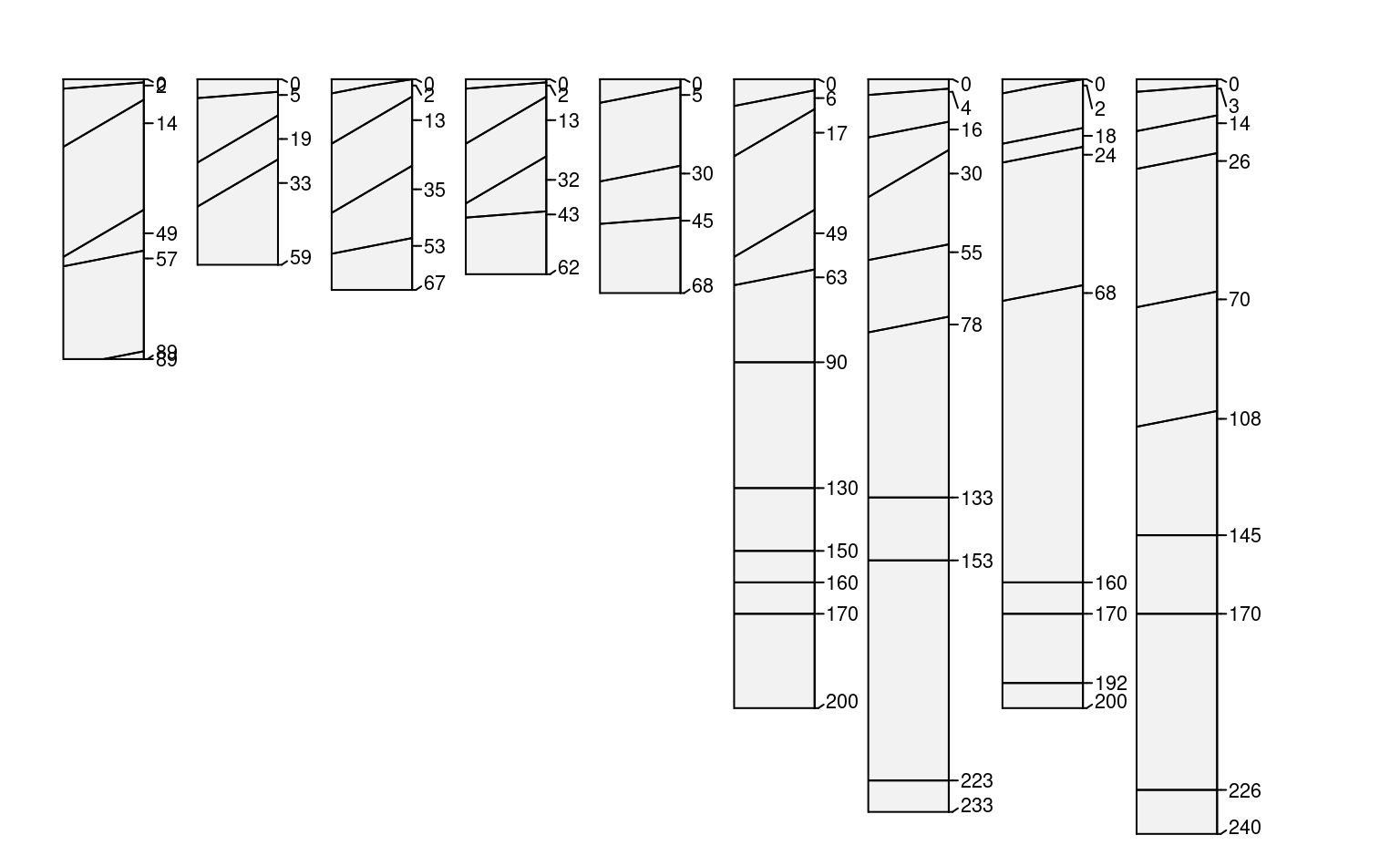Convert Horizon Boundary Distinctness to Vertical Offset
Source:R/hzBoundary.R
hzDistinctnessCodeToOffset.RdThis function will convert USDA-NCSS horizon boundary distinctness codes into vertical (+/-) offsets in cm, based on the Field Book for Describing and Sampling Soils, version 3.0.
Details
The default offsets are based on the high-end of ranges presented in "transitional zone thickness criteria" from the Field Book version 3.0 (page 2-6). Offsets are returned as 1/2 of the transitional zone thickness so that horizon boundaries can be adjusted up/down from horizon depths. See plotSPC, specifically the hz.distinctness.offset argument for visualization ideas. Missing data in x (NA) or codes that are not defined in codes are returned as 0 offsets.
Either format (or mixture) are accepted, case insensitive:
terms:
c('very abrupt', 'abrupt', 'clear', 'gradual', 'diffuse')coded values:
c('v', 'a', 'c', 'g', d')
Additional examples are available in the Visualization of Horizon Boundaries tutorial.
Examples
# example data
data(sp1)
# compute 1/2 transitional zone thickness from distinctness codes
sp1$hzdo <- hzDistinctnessCodeToOffset(sp1$bound_distinct)
# convert colors from Munsell to hex-encoded RGB
sp1$soil_color <- with(sp1, munsell2rgb(hue, value, chroma))
# promote to SoilProfileCollection
depths(sp1) <- id ~ top + bottom
hzdesgnname(sp1) <- 'name'
# adjust margins
op <- par(mar=c(0,0,0,1.5))
# sketches, adjust width, adjust text size, include coded hz distinctness offsets
plotSPC(sp1, width=0.3, cex.names=0.75, hz.distinctness.offset = 'hzdo')
#> [P001:6] horizon with top == bottom, cannot fix horizon depth overlap
#> consider using repairMissingHzDepths()
 # clean-up
par(op)
# clean-up
par(op)